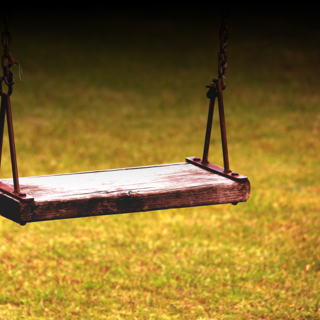Sexual Abuse
How Can We Identify Teenage Victims of Child Sexual Abuse?
Female gender, self-mutilation, and feeling not accepted are predictive of CSA.
Posted October 11, 2018 Reviewed by Abigail Fagan

Child sexual abuse (CSA) is prevalent. CSA is associated with serious consequences, so early detection of sexual abuse can help improve victims’ outcomes. In a new study, Mignot and colleagues in France have concluded that female gender, fear of violence, regular use of cannabis, weight concerns, feeling not accepted by others, suicide attempts, and self-mutilation were predictive of sexual abuse.1
Consequences of sexual abuse
Child sexual abuse refers to any attempted or completed “sexual act, sexual contact with, or exploitation (i.e., noncontact sexual interaction) of a child by a caregiver.”2
CSA has been linked to serious consequences. These include maladaptive behaviors and physical/psychological difficulties such as poor self-esteem, depression, anxiety, anger, hostility, aggression, post-traumatic stress disorder, headache, insomnia, nightmares, obesity, asthma, irritable bowel syndrome, chronic fatigue, heart problems, fibromyalgia, self-mutilation and other self-destructive behavior, alcohol/substance abuse, suicidal ideation/attempts, sexual maladjustment, unprotected sex, multiple sexual partners, etc. 1,3
Though some survivors of sexual abuse discover a positive way to make sense of their negative experiences (e.g., by becoming advocates for children’s rights), others struggle. Some find themselves pulled into a life of prostitution and drug/alcohol abuse.
We need to prevent CSA. In addition, we need to identify CSA victims as early as possible, so we can provide effective treatments.
How can we identify CSA victims? In their study, Mignot and colleagues looked for answers.
Characteristics of sexual abuse victims
Data for the study came from a 2012 cross-sectional survey of 1,719 15-year-old students in France.1
The sample consisted of 850 male and 869 female students. Students completed an anonymous self-questionnaire in class, which included a question about sexual abuse history: “During your life, have you ever been the victim of sexual assault (including attempted assault)?” Nearly 100 students—10% of girls and 2% of boys—had been sexually abused.

Analysis of the results revealed that teenagers with a history of CSA differed from other teenagers in several important ways. For instance, they experienced more fatigue and schoolwork related stress. In addition, they were more likely to have been victims of violence at school–even though they were not more violent themselves.
Compared to non-victims, CSA victims smoked and used cannabis more frequently, and suffered from greater sleep difficulties and nightmares (only 25% found their sleep satisfactory); they were three times more likely to have low self-esteem.
Results showed that the following factors were predictive of sexual abuse history: fear of violence at school, regular cannabis use, distorted self-image (feeling “not at all the right weight.”), feeling not accepted by other students (endorsing the statement that others “do not accept me as I am.”), suicide attempts, and self-mutilation. Even without the last two factors, the authors’ model was predictive of CSA (C-index of 0.79 vs. 0.83).
Mignot et al. concluded that the “most sensitive” items for the detection of CSA were female gender, self-mutilation, and not feeling accepted.
Implications for identifying abuse victims
In the present study, students with a history of CSA had more contact with general practitioners, than with other health professionals; which is why general practitioners have a unique opportunity to help identify victims of CSA.
While general practitioners may find it difficult to ask questions regarding potential sexual abuse during a routine visit, they can inquire about the more general predictors of CSA—such as the teenage patient’s sleep patterns, self-esteem, alcohol and drug use, and even problems at school.
If answers to these questions suggest a history of sexual abuse, then there will be justification for more direct questioning regarding sexual abuse, and making appropriate referrals.
While the above predictors are not specific to CSA victims only, and do not identify all sexual abuse victims either, they are strong enough predictors that their presence would justify further questioning. This questioning, of course, has to be done carefully. In this study, CSA victims were more likely to confide in doctors who did not appear to judge them, who “could keep a secret,” and who “were available to listen to them.”
If you have been sexually abused, know that you are not alone. And it is not your fault. Child sexual abuse is unacceptable, immoral, and illegal. It can cause serious and long-lasting health consequences. Help is available. See this for a list of resources. And if you are a physician, watch for signs of CSA.
References
1. Mignot, S., Fritel, X., Loreal, M., Binder, P., Roux, M-T, Gicquel, L., & Ingrand, P. (in press). Identifying teenage sexual abuse victims by questions on their daily. Child Abuse & Neglect. doi:/10.1016/j.chiabu.2018.07.027
2. Leeb, R. T., Paulozzi, L. J., Melanson, C., Simon, T. R., & Arias, I. (2008). Child maltreatment surveillance. Uniform definitions for public health and recommended data elements. Atlanta, GA: Centers for Disease Control and Prevention.
3. Wilson, D. R. (2010). Health consequences of childhood sexual abuse. Perspectives in Psychiatric Care, 46, 56–64.




